Cheongchoho Lake Park (청초호 호수공원)
0 2024-04-08
140 Expo-ro, Sokcho-si, Gangwon-do40
Cheongchoho Lake Park is where the 1999 International Tourism & Culture Expo was held. Benches are scattered around the park for resting in the shade of trees. By the natural lake is a walking deck for enjoying tulips in spring, marinas in summer, chrysanthemums in fall, and snow in winter. From the top of the Expo Tower, one can see a panoramic view of Cheongchoho Lake, Cheongchoho Lake Park, the East Sea, and even Jodo Island. On the other side, Ulsanbawi Peak and Dalmabong Peak of Seoraksan Mountain come into view.
Sokcho Beach (속초해수욕장)
148075 2024-04-08
190 Haeoreum-ro, Sokcho-si, Gangwon-do
Sokcho Beach opened in 1976 and is one of Korea's representative beaches. It is close to Sokcho's downtown, and the express bus terminal is also within walking distance, so transportation is convenient. With clear sea water, shallow depth, and a gentle slope, Sokcho Beach attracts visitors from all over the country every summer. Especially during the high season in July and August, the beach is so cluttered that there's nowhere to walk. There are many restaurants and facilities near the beach. And there is a pine forest with a small park and a trail behind the beach. The sculptures installed throughout the sandy beach are a sight to see regardless of the season, so tourists continue to visit even after the holiday season. There are sculptures including the Korean initials "ㅅㅊ" symbolizing Sokcho, a large compass showing directions to countries around the world, and a dolphin sculpture. The large picture frame with the blue sea in the background and the Stairway to Heaven are the most popular photo spots here. The beach often serves as a venue for a variety of events like performances and festivals.
Archaeological Site in Wanggung-ri [UNESCO World Heritage] (익산 왕궁리유적 [유네스코 세계문화유산])
26591 2024-04-07
666, Gungseong-ro, Iksan-si, Jeonbuk-do
+82-63-859-4631
Archaeological Site in Wanggung-ri, designated as Historic Site No. 408 on September 17, 1998, has a surface area of 216,862 square meters. The site has various structures and artifacts from Baekje dynasty to unified Silla period. Artifacts were found within the rectangular-shaped fortress site that surrounds Wanggungri Five-story Stone Pagoda, National Treasure No. 289.
Baemsagolgyegok Valley (뱀사골 계곡)
27826 2024-04-07
Buun-gil, Namwon-si, Jeonbuk-do
+82-63-630-8900
Located in Namwon, Jeollabuk-do, Baemsagolgyegok is a 9-km grand valley, situated at the northern foot of Jirisan Mountain. Stretching from Banyabong Peak and Tokkibong Peak toward Sannae-myeon of Namwon-si, the valley is renowned for its beautiful autumn foliage.
Baemsagolgyegok Valley is popular as a summer vacation destination because there’s always an abundance of water and trees. In the fall, the hills become ablaze with autumn tints, small streams flow over rock beds, and small pools of clear water from under the rocks create a beautiful sight. Other notable places nearby include Seonindae, Seoksil, Yoryongdae, Tagyongso, Byeongso, Byeongpungso, Jeseungdae and Ganjangso.
Sinsido Island Fishing Experience Village (신시도 어촌체험마을)
27980 2024-04-07
83-7, Sinsido-gil, Gunsan-si, Jeonbuk-do
+82-63-463-7088
Sinsido Island is the largest of the 24 islands in the Gogunsan Island Cluster located 50 kilometers southwest of Gunsan. The highest point is Daegaksan Mountain (187 meters) on the northwest side and there is Sinchisan Mountain (142 meters) on the southeast side. Villagers tend to work in the fishing industry, catching shrimp, anchovies, hairtail, and mackerel. Farmers tend to grow rice, barley, sweet potato, chili, peas and more. The island can be reached by car and there are various activities available such as mud flats and fishing.
Jeoksangsanseong Fortress (무주 적상산성)
7613 2024-04-07
Goemok-ri, Muju-gun, Jeonbuk-do
+82-63-322-2905
Jeoksangsan Mountain (elevation 1,034m) in Muju, Jeollabuk-do, is surrounded by precipitous walls of stratified rocks. The basin on the mountain top there is a lake called ‘Jeoksangho’; and along the ridge enclosing the lake stands Jeoksangsanseong Fortress extending over 8,143m. During the Goryeo period the region was a place of refuge for civilians at times of war. The fortress wall was built during the Joseon era.
Gochang Seonunsa Temple (선운사 (고창))
37410 2024-04-07
250, Seonunsa-ro, Gochang-gun, Jeonbuk-do
+82-63-561-1422
Seonunsa Temple is known to have been built in 577, the 24th year of King Wideok of the Baekje dynasty. It is the second head temple of Jogye Order in Jeollabuk-do. According to the temple's historical records, it was originally a very large temple with 89 hermitages and 3,000 monks. Today, only four hermitages remain: Dosoram, Chamdangam, Dongunam, and Seoksangam. In addition, the temple is home to 25 prestigious heritages, namely the Forest of Common Camellias, which is designated as ㅁ Natural Monument. A festival dedicated to this forest is held every April.
Maisan Hwaeomgul Cave (마이산 화엄굴)
13397 2024-04-07
367, Maisannam-ro, Jinan-gun, Jeonbuk-do
+82-63-430-8751
Maisan Mountain has two major peaks made of sedimentary rocks; these peaks are said to be ‘couple peaks’ and cannot be found anywhere else. Sut Maibong (alt. 667 meters) is said to be the male peak while the slightly larger Am Maibong (alt. 673 meters) is deemed the female peak. In the early Joseon period the mountain was named ‘Sokgeumsan,’ but began to be called ‘Maisan’ after the 12th year of King Taejong, who commented that the two peaks resembled horse ears (‘maisan’ meaning ‘horse ears’). All along Maisan Mountain, visitors will find small crater-like rock cavities that are formed by prolonged weathering. These unique geological features, called ‘tafoni,’ are of great academic value.
Inside Hwaeomgul Cave, visitors can observe medicinal water that flows up from underground all throughout the year. It is widely believed that once you drink the water, especially on the days of the Spring and Autumn Equinox, you will soon have a son and be blessed by the mountain spirit. Even today, many women who have difficulty conceiving visit the mountain to pray to the mountain spirits for their heart’s desire—the gift of a child. The region in which Maisan is located is the birthplace of many talented people and national heroes, which some say is proof of the blessings of the mountain and its extremely powerful spirit.
Iksan Sungnimsa Temple (숭림사(익산))
7496 2024-04-07
495-57, Baekje-ro, Iksan-si, Jeonbuk-do
+82-53-862-6394
Sungnimsa Temple is one of the major temples in Iksan under Geumsansa Temple and was believed by some to have been built by monk Jinpyo Yulsa during the reign of King Gyeongdeok (742-764) during the Silla period. Others believe that the temple was established during the first year of King Chungmok of the Goryeo dynasty in 1345. Sungnimsa Temple was named in honor of great monk Bodhi-Dharma, who practiced seated Zen meditation for nine years at Sorimsa Temple located deep inside Sungsan Mountain in China. The temple was burnt down during the Imjin War (1592-1598), leaving only Bogwangjeon Hall. Bits and pieces of the temple were later restored in 1697, 1819, and 1892.
Buan Guam-ri Dolmens (부안 구암리 지석묘군)
7213 2024-04-07
Seoksang-ri, Buan-gun, Jeonbuk-do
+82-63-580-4711
Buan Guam-ri Dolmens, designated as Historical Site No. 103, is comprised of southern-style dolmens. Dolmen refers to a particular structure of a tomb created during the Bronze Age. Dolmen is largely classified into two groups – Southern-type that has small footstones supporting large top stone; and Northern-type which is shaped like a desk. In Guam-ri, there were originally 13 dolmens, but only 10 remain. Most of the dolmens have 8 small footstones propping up one large top stone, compared to the dolmens in other regions which normally have 4 footstones.

![Archaeological Site in Wanggung-ri [UNESCO World Heritage] (익산 왕궁리유적 [유네스코 세계문화유산])](http://tong.visitkorea.or.kr/cms/resource/97/2514197_image2_1.jpg)
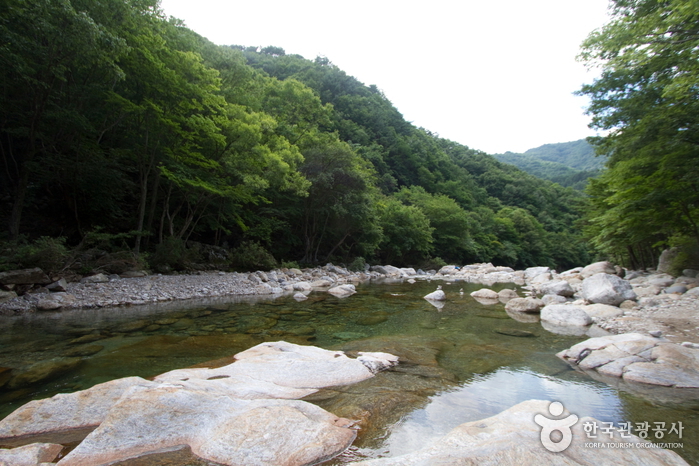
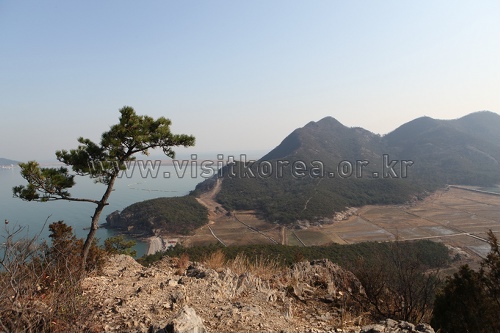
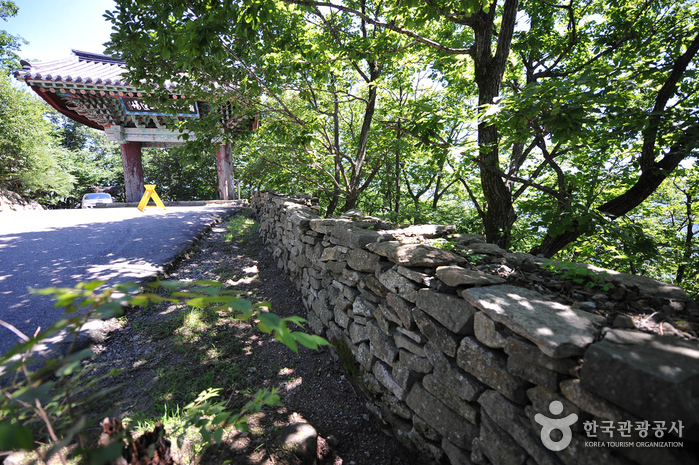
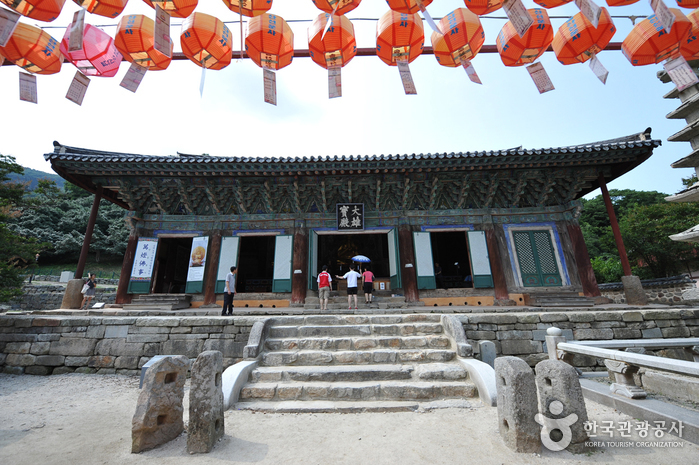
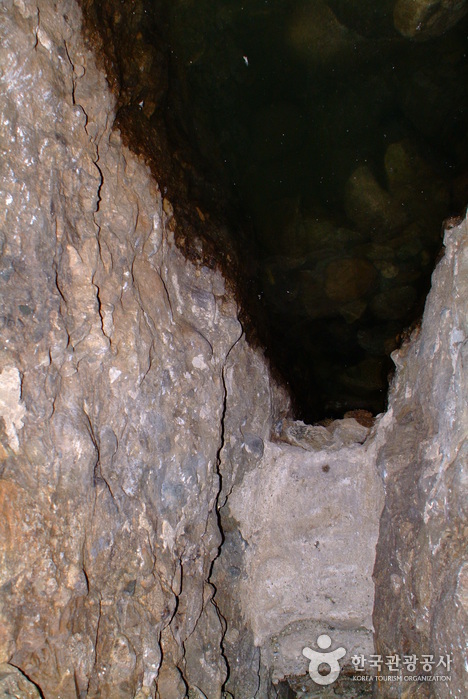
 English
English
 한국어
한국어 日本語
日本語 中文(简体)
中文(简体) Deutsch
Deutsch Français
Français Español
Español Русский
Русский